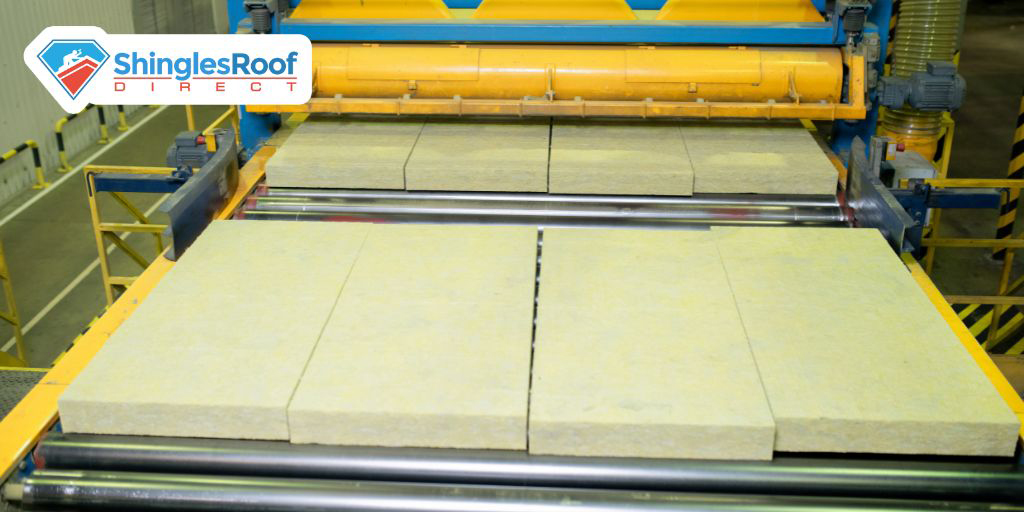Created by Microhound
In response to the rising concern over noise pollution, acoustic roof solutions create quieter and more peaceful indoor environments. Acoustic roofing uses specially designed materials and construction techniques to reduce the transmission of external noise into buildings. These roofs block unwanted sounds and absorb and dampen noise. They enhance the overall comfort and livability of a home or workplace. By investing in acoustic roofing, homeowners and businesses can improve their quality of life, ensuring a serene and restful atmosphere.
In this article, we’ll explore the fundamentals of noise reduction, the best materials and designs for acoustic roofing, and the benefits these solutions offer. We will equip you with the knowledge to make informed decisions about acoustic roofing solutions.
Table of Contents
Understanding Noise Pollution
Noise pollution, or environmental noise, refers to unwanted or harmful sounds that disrupt the natural balance of our surroundings. It is the excessive levels of noise that can interfere with daily activities, reduce the quality of life, and even cause adverse health effects. Common sources of noise pollution include:
Traffic: The most pervasive source, such as road, rail, and air traffic. The constant flow of vehicles, trains, and aircraft generates significant noise that permeates urban and suburban areas.
Construction: Building activities, especially in urban areas, contribute substantially to noise pollution. The use of heavy machinery, demolition, and construction work create high decibel levels.
Industrial Activities: Factories, manufacturing plants, and other industrial operations often produce continuous noise from machinery, equipment, and industrial processes.
Public Events and Social Activities: Concerts, festivals, sports events, and even nightlife can generate significant noise, impacting nearby residents.
Household Noise: Everyday household activities such as lawn mowing, the use of power tools, and loud music can contribute to noise pollution.
Basics of Acoustic Roofing
What is Acoustic Roofing?
Acoustic roofing minimizes the transmission of sound from the outside environment into the interior of a building. Unlike traditional roofing, acoustic roof solutions incorporate materials and construction techniques that target noise reduction. This roofing is essential in urban areas, near busy roads, airports, or industrial zones, where noise pollution is prevalent.
Key Principles of Acoustic Roof
The key principles of acoustic roof are combined in various ways to create an effective acoustic roofing system. The approach will depend on the home/building’s location, the sources of noise, and the desired level of noise reduction. An effective acoustic roof will typically involve a multi-layered construction, incorporating both sound-absorbing and sound-insulating materials, along with design features that manage sound reflection.
1. Sound Absorption
It involves the use of materials that can capture and dissipate sound energy. These materials are typically porous and dense, allowing them to absorb sound waves rather than reflecting them back into the environment. In acoustic roofing, materials like acoustic tiles, fiberglass, and mineral wool are commonly used to absorb sound.
2. Sound Insulation
This refers to the ability of a material to block or impede the transmission of sound through it. In acoustic roof solutions, this means using dense, heavy materials that can act as barriers to sound. Common insulating materials include mass-loaded vinyl, dense foam boards, and specialized soundproofing membranes. These materials are incorporated into the roof assembly to create a barrier that prevents exterior noise from penetrating the building.
3. Sound Reflection
While absorption and insulation are critical, controlling sound reflection is also important. Sound reflection occurs when sound waves bounce off surfaces and travel back into the environment. In an acoustic roofing system, materials and designs are used to manage these reflections effectively. This might involve using angled surfaces or incorporating reflective barriers in strategic locations.
Materials for Acoustic Roofing
Insulating Materials
Mineral wool: Also known as rock wool or stone wool. This is made from natural stone or recycled slag. Its dense structure makes it highly effective at blocking sound transmission. Mineral wool also provides excellent thermal insulation, making it a dual-purpose material that enhances both acoustic and thermal performance of the roof.

Fiberglass: This is composed of fine glass fibers and is commonly used in acoustic roofing. It is lightweight, non-combustible, and provides good sound insulation by trapping air within its structure, which dampens sound waves. Fiberglass is also resistant to moisture, mold, and mildew, contributing to the longevity of the roofing system.
Foam boards: These boards, such as extruded polystyrene (XPS) and expanded polystyrene (EPS), are used for their sound-insulating properties. These rigid foam boards are lightweight yet dense, providing an effective barrier against sound transmission. They are also easy to cut and install, making them a practical choice for various roofing applications.
Mass-Loaded Vinyl (MLV): A dense, flexible material that can be added to roofing assemblies to enhance sound insulation. It is designed to add mass to structures without increasing thickness, thereby blocking sound waves. MLV is often used in combination with other materials to achieve optimal noise reduction.
Sound-Absorbing Materials
Acoustic tiles: Specially designed panels that absorb sound and reduce noise levels. These tiles are often made from materials like fiberglass, mineral wool, or foam, and are covered with fabric or other finishes to enhance their appearance. Acoustic tiles can be integrated into the roof structure or used as an additional layer to improve sound absorption.
Acoustic Panels: Similar to acoustic tiles, these are used to absorb sound and reduce noise. They are typically larger and thicker than tiles and can be mounted directly onto the roof deck or suspended from the roof structure. Panels made from materials like perforated metal, wood, or composite materials can also add aesthetic value while enhancing acoustic performance.
Spray foam insulation: Particularly open-cell spray foam, is effective at absorbing sound. When applied to the underside of the roof deck, it expands to fill gaps and create a continuous barrier that reduces sound transmission. Spray foam also provides excellent thermal insulation and can improve the overall energy efficiency of the building.
Roofing Shingles
Rubberized Asphalt Shingles: These combine traditional asphalt with rubber particles, providing enhanced flexibility and sound dampening. These shingles are effective at reducing impact noise from rain and hail, as well as airborne noise from external sources.
Composite Shingles: Made from a blend of materials such as recycled plastics, rubber, and other polymers. They are designed to mimic the appearance of traditional roofing materials like wood or slate while offering superior acoustic properties. The composite structure helps to absorb and reduce noise transmission.
Clay and Concrete Tiles: While traditionally used for their durability and aesthetic appeal, clay and concrete tiles also offer good sound insulation properties due to their mass and density. These materials are effective at blocking airborne noise and can be used in acoustic roofing designs to achieve both functional and aesthetic goals.
Benefits of Acoustic Roofing Materials
The use of these materials in acoustic roofing provides several benefits, including:
Noise Reduction: Effective insulation and sound absorption significantly reduce external noise, creating a quieter indoor environment.
Enhanced Comfort: Lower noise levels contribute to a more comfortable and serene living or working space.
Energy Efficiency: Many acoustic materials also provide thermal insulation, improving the building’s energy efficiency and reducing heating and cooling costs.
Increased Property Value: Homes and buildings with acoustic roofing solutions are often more desirable, potentially increasing property value.
Durability and Longevity: High-quality acoustic materials are designed to be durable, ensuring that the roofing system remains effective over time.
Design Considerations for Noise Reduction
Roof Structure
The structure and shape of a roof play a significant role in noise reduction, influencing how effectively sound is attenuated within the building. Here’s how different roof types impact noise reduction:
1. Sloped Roofs
Sloped roofs are inherently better at deflecting and dispersing sound waves compared to flat roofs. The angled surface helps to break up and redirect sound, reducing the intensity of noise transmission into the building. Additionally, the pitch of the roof can affect how rain and other precipitation create noise. A steeper pitch can help to minimize the impact of rainfall noise by allowing water to quickly run off the roof surface.
2. Flat Roofs
While flat roofs are common in urban environments and modern architectural designs, they can pose challenges for noise reduction. Without the natural inclination to deflect sound, flat roofs are more prone to allowing noise to penetrate directly into the building. However, strategic placement of sound-absorbing and sound-insulating materials, along with proper sealing of roof penetrations, can mitigate noise transmission in flat roof structures.
Installation Techniques
Proper installation techniques are essential for maximizing the noise reduction capabilities of acoustic roofing materials. Here are some best practices to follow:
1. Seamless Installation
Ensure that acoustic materials are installed seamlessly and without gaps or overlaps to prevent sound leakage. This may involve using specialized adhesives, fasteners, or sealants to secure materials in place effectively.
2. Layering Approach
Employ a layering approach when installing acoustic materials, especially in areas prone to high noise levels. Multiple layers of insulation, absorption, and damping materials can provide enhanced noise reduction by creating barriers that effectively block and absorb sound waves.
3. Attention to Detail
Pay close attention to details such as sealing around roof penetrations, joints, and edges to prevent air leakage and sound transmission. Properly sealing gaps and seams can significantly improve the overall effectiveness of the acoustic roofing system.
4. Professional Installation
Consider hiring experienced roofing contractors with expertise in acoustic roofing installations. Professional roofers can ensure that materials are installed correctly and according to manufacturer specifications, maximizing their noise reduction capabilities.
Additional Features
1. Double-Layered Roofing
Double-layered roofing systems consist of two layers of roofing materials separated by an air gap or insulation layer. This configuration provides additional mass and insulation, effectively reducing noise transmission. Double-layered roofs are particularly effective in blocking low-frequency noise, such as traffic or machinery noise.
2. Proper Sealing of Gaps
Properly sealing gaps and openings in the roof structure is crucial for preventing sound leakage and maximizing noise reduction. This includes sealing around roof penetrations, edges, and joints using acoustic sealants or caulks. Attention to detail during the sealing process is essential to ensure that the roof remains airtight and soundproof.
Embracing Acoustic Roof Solutions for Quieter, More Comfortable Spaces
Acoustic roof solutions reduce noise pollution and enhance the comfort of indoor spaces. By using sound-absorbing and sound-insulating materials, along with thoughtful design considerations, homeowners and businesses can create quieter, more peaceful environments. From selecting the right roofing materials to implementing proper installation techniques, every aspect of acoustic roofing contributes to a significant reduction in noise transmission.
As you plan your next roofing project, consider the benefits of acoustic roofing solutions. By investing in acoustic roofing, you minimize noise pollution and improve the quality of life for yourself and your occupants.
Quick FAQs on Commercial Roof Replacement
What is acoustic roofing, and how does it differ from traditional roofing?
Acoustic roofing is specially designed to reduce noise pollution by incorporating sound-absorbing and sound-insulating materials. Unlike traditional roofing, which primarily focuses on weather protection, acoustic roofing prioritizes noise reduction to create quieter indoor environments.
How do I know if acoustic roofing is suitable for my home or building?
Acoustic roofing is beneficial for any building or home located in noisy environments, such as urban areas, near highways, airports, or industrial zones. If you experience high levels of noise pollution indoors, acoustic roofing can help mitigate these effects and create a more peaceful living or working space.
Are there any maintenance considerations for acoustic roofing?
Acoustic roofing requires regular maintenance, similar to traditional roofing systems. Inspections should be conducted periodically to check for any damage or deterioration of acoustic materials. Additionally, keeping gutters clean and ensuring proper drainage can help maintain the integrity of the roofing system.
Created by Microhound

